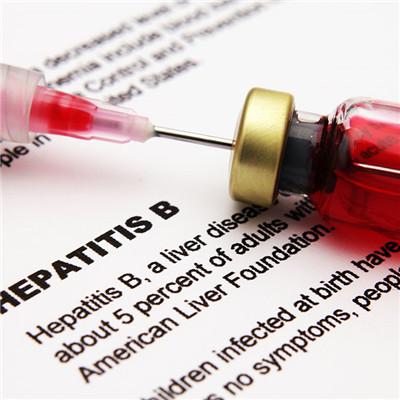How is anisakiasis caused?
summary
How is anisakiasis caused? The third stage larvae of Anisakis usually migrate from intestine to various tissues and parasitize in the abdominal cavity. When the fish died, the larvae moved into the muscles of the body wall. The third stage larvae are slender in shape and about 30 mm in size × 1 mm, with lateral funiculus, Y-shaped in cross section.
How is anisakiasis caused?
Anisakid nematodes belong to Ascaris, Ascaris, ANISAKIDAE. At present, there are at least 30 species of anispidae, which are easy to be synonymous because of the difficulty in larval identification. There are four genera that are generally recognized as pathogenic to human beings: 1. Anisakia, including simple anisakia, typical anisakia and sperm whale anisakia; ② The genus pseudogeonema includes pseudogeonema, phocanema and cnaphelenchus; ③ To Caenorhabditis; ④ The genus hysteroderma includes tuna roundworm, etc. Anisakia simplex, neonema pseudogeonema and Meloidogyne hysterica have been found in fishes in China, but no human infection has been reported. The adult of Anisakis resembles Ascaris lumbricoides, and the length of male is 31-90mm; The female is 63-100 mm. Adults live in the stomachs of whales, dolphins, seals, sea lions and other marine mammals. Egg size 50.7 μ m × fifty-three μ m. When the feces of the host are discharged into seawater, the fertilized egg cells develop into embryos and become the mature stage with the first stage larvae. When the sea water temperature is suitable (about 10 ℃), the larvae in the egg shell emerge and develop into the second stage larvae, about 230 meters long μ m。 It can swim freely in sea water and survive for 2-3 months. When the second stage larvae are swallowed by crustaceans (the first intermediate host) such as krill in seawater, they enter the body cavity and develop into the third stage larvae in the blood cavity. When marine fish and mollusks (the second intermediate host) swallow the crustacean containing larvae, the larvae enter into the digestive tract, viscera and muscle tissues to parasitize. After the third stage larvae are swallowed by marine mammals (end hosts), the larvae drill into their gastric mucosa and grow in groups. They develop into female and male adults, mate and lay eggs, and complete their life cycle. Human is not a suitable host for Anisakis. The third stage larvae can parasitize all parts of human digestive tract and cause visceral larval migration. But this larva can not develop into adult in human body, and usually die within 2-3 weeks.

The third stage larvae of Anisakis usually migrate from intestine to various tissues and parasitize in the abdominal cavity. When the fish died, the larvae moved into the muscles of the body wall. The third stage larvae are slender in shape and about 30 mm in size × 1 mm, with lateral funiculus, Y-shaped in cross section. There are three lips around the mouth (one on the back and two on the ventral) and one drill tooth. The esophagus is a white columnar shape, which can be divided into glandular gastric sacs at the front end and the back end of the muscle, and connected with the intestine, with the anus at the end. The excretory orifice was opened at the level of the abdominal nerve ring, behind the drill teeth. The sex organs are obvious. The third stage larvae of Anisakis simplex were found in the fishes of the East China Sea, Yellow Sea and Beibu Gulf, with a size of about 18.73 mm × 14 mm, the average length of esophagus was 2. 29 mm, and the tail length was 0. 09 mm.

The third stage larvae of Anisakis invade the human body by mouth. The larvae have strong piercing force and can penetrate into the throat, stomach or intestinal mucosa to cause pathological changes. The symptoms of the first infection are mild and difficult to find. After repeated infection, the body will be sensitized, which will cause serious reaction. The larvae penetrate into the gastrointestinal mucosa, ingest tissue components and cause inflammation, characterized by eosinophil infiltration. If the larva continues to penetrate, it can reach the submucosa, causing mucosal edema, bleeding, connective tissue hyperplasia, thickening, lymphangitis and lymphangitis. Larvae are common in the center of diseased tissues. After a few days, eosinophilic abscess appeared around the worm, and then the worm died and decomposed, gradually forming eosinophilic granuloma, which could cause intestinal obstruction and necrosis. In severe cases, the larvae even penetrate the intestinal wall and migrate to the mesentery, liver, pancreas, abdominal wall, groin and oral mucosa. From the pathological tissue specimens of the stomach or intestinal tract removed by surgery, it can be seen that there are localized masses, bleeding, erosion and ulcers under the mucosa. The thickening of the intestinal wall can reach two or three times of the normal, which is the cause of intestinal stenosis and obstruction.

matters needing attention
The pathological section showed that there were one or several sections of worms in the submucosa. Sometimes in the center of the lesion, there are residual worm fragments or necrotic tissue, or only the corner skin or space of the worm body due to film making. There were a lot of eosinophils, plasma cells and macrophages around the body. According to the degree of pathological damage, Kojima koji (1966) divided the pathological images into four types: type I foreign body cellulitis type; Type II: abscess type; Type III: abscess granuloma type; Type IV granulomatous type. From the onset of the disease, the lesions migrated from type I to type IV. Type I and type II were exudative inflammation, with high edema of stomach and intestinal wall; Type III and type IV belong to proliferative inflammatory phase. Granuloma composed of epithelioid cells can be seen around the abscess.














